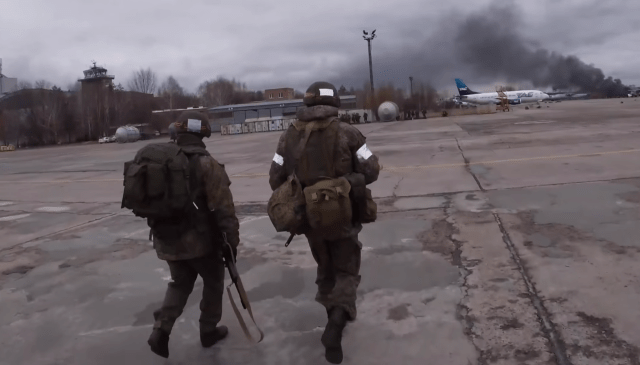Geopolitical risk of foreign mercenaries and fighters in the Ukraine conflict

Author: Giuliano Bifolchi
According to the Russian Defense Ministry, several foreign fighters from different countries are fighting in Ukraine to support Kyiv’s Government. On the other hand, Middle Eastern newspapers reported that Syrian and Iranian fighters might arrive in Ukraine to fight among the Kremlin’s ranks.
On April 17th, 2022, the official representative of the Russian Defense Ministry, Igor Konashenkov, reported that 6,824 foreign ‘mercenaries’ from 63 states arrived in Ukraine to support Kyiv’s Government and fight against the Russian Armed Forces. According to him, the most numerous among them are Polish citizens (1,717 people). Among the mercenaries, there are also immigrants from the Middle East and people from the United States, Canada, Romania, the United Kingdom, Georgia, and the Turkish-controlled area of the Syrian Arab Republic.
Until now, according to Konashenkov, the Russian Armed Forces killed 1,035 foreign mercenaries. Currently, 4,877 people are fighting on the side of Kyiv’s Government.
At the same time, several Middle Eastern newspapers reported that Syrian soldiers left their bases to support Russian troops in Ukraine. The deployment of Syrian forces in Ukraine responds to the principle of reciprocity. In 2015, Moscow sent its military in support of Bashar al-Assad to fight in Syria, which prevented the fall of the regime and the recovery of control over much of the country.
Therefore, Syria, which still counts on Russian military support, has an obligation toward Russia. Syrian troops have acquired experience and training in these years of fighting, including overcoming language barriers. These aspects will facilitate the coordination of their forces in Ukraine.
The Times, referring to diplomatic sources, reported that “The first contingent of (Syrian) soldiers arrived in Russia for military training, before moving to Ukraine”. The Syrian soldiers sent to fight in the Russian-Ukrainian conflict are members of the 25th Division, known as “Tiger Forces”, an elite unit of the Syrian army. The unit worked closely with Russian officers in Syria.
According to Western sources, Moscow is offering the troops of an elite unit 1,200 dollars a month for six months and a 3,000 dollars bonus when the contract expires. The financial rewards are much higher than the $ 100 a month they would receive in the Syrian army. Furthermore, if the military is killed in combat, their families will receive 2,800 dollars and 600 dollars a month for one year. Individuals sent to fight with the Russians must first be checked by the Syrian security services.
Iran is also organising a “Shiite International Army” to support the Russian Federation. A militia commander, whose forces include fighters from Syria and neighbouring countries, told the Times that “his group has sent another contingent of 85 men to Russia” and “more are on the way.”
Risk assessment
The presence of foreign fighters and mercenaries in Ukraine might threaten European security since these combatants might exploit the Ukraine soil as a ‘bridge’ or logistic hub to conduct their activities on the continent. Regarding what the Russian Defense Ministry, Western and Middle Eastern reported on foreign mercenaries, the Ukraine conflict has become an attractive pole for private military companies (PMCs), militant groups (such as Dzhokar Dudaev Battalion), and foreign special forces that might have access to modern and sophisticated weapons that the West is sending to Kyiv. Considering also that recently the Islamic State has released an audio message in which the terrorist group exhort its fighters to exploit the Ukraine conflict to organise terrorist attacks against Western countries and destroy the Russian Federation (Islamic State leadership released new audio: an analysis; Ukraine conflict, kadyrovtsy and Chechnya), the Ukrainian conflict is raising the geopolitical risk for the entire Eurasian chessboard.
Request a full SpecialEurasia report on the Ukraine conflict by contacting our team at the following Link.
